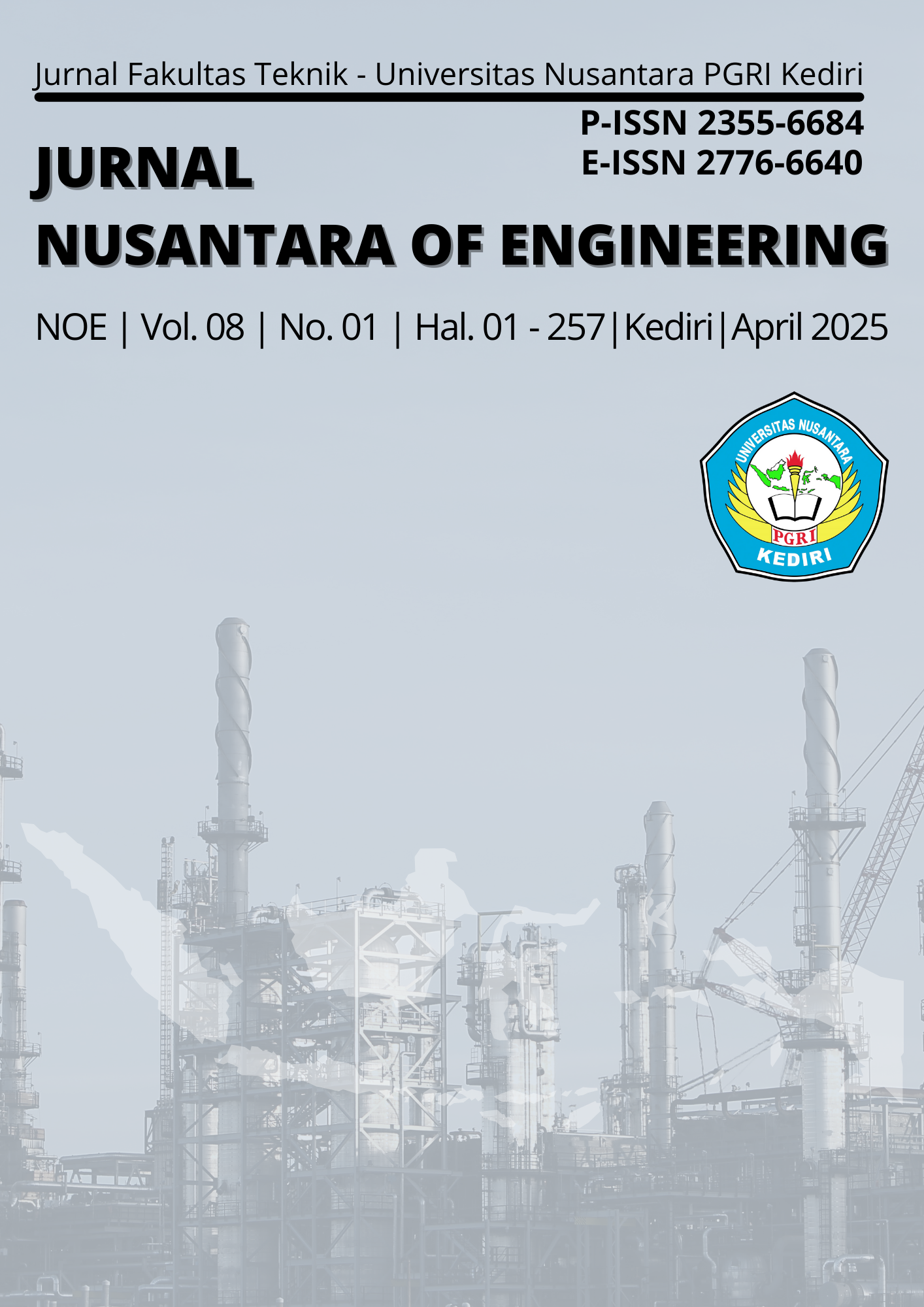ANALYSIS OF POTENTIAL HAZARDS USING THE JOB SAFETY ANALYSIS (JSA) AND JOB HAZARD ANALYSIS (JHA) METHODS IN THE NICKEL CHAIN PROCESS IN NICKEL MINING
DOI:
https://doi.org/10.29407/noe.v8i01.23138Keywords:
Job Safety Analysis, Job Hazard Analysis, Nickel Chain, Potential HazardsAbstract
This research aims to identify potential dangers that exist in the mining process at PT. Putra Mekongga Sejahtera by using the JSA and JHA methods, mitigates potential dangers in the mining process. PT. Putra Mekongga Sejahtera by using the JSA and JHA methods, and implementing awareness of the importance of occupational safety and health at work sites using the JSA and JHA methods. This research uses two research methods, namely Job Safety Analysis and Job Hazard Analysis. The data collection method for JSA uses primary data and secondary data. Meanwhile, the instruments or data collection tools used in this research are interview guides and observation sheets based on the JHA form. So that the results of the interview can be recorded properly and researchers have evidence after conducting interviews with informants or data sources. The results of the research show that accidents that often occur in the mining process are on the hauling line (production line). All accidents occur on the hauling line. The highest cases occurred in June 2022 and resulted in lost work days in May 2023. Therefore, the application of Job Safety Analysis (JSA) and Job Hazard Analysis (JHA) is a tool to avoid work accidents. These potential hazards can be controlled by determining a priority scale first which can then help in prioritizing which can then help in selecting risk controls which is called the risk control hierarchy. The importance of implementing K3 awareness at work locations for company employees must be implemented and given special attention because this is a shared responsibility so support and support is really needed in the company, both from the leadership to the workers in the field.
Downloads
References
Cahyaningrum, D., Sari, H. T. M., & Iswandari, D. (2019). Faktor-Faktor Yang Berhubungan Dengan Kejadian Kecelakaan Kerja Di Laboratorium Pendidikan. Jurnal Pengelolaan Laboratorium Pendidikan, 1(2), 41-47.
Dedi, S. (2021). Analisis Bahaya Menggunakan Metode Job Safety Analysis (JSA) Dalam Kegiatan Loading Dan Pengangkutan --Ore/Ob Di PT. Bukit Makmur Istindo Nikeltama, Kabupaten Morowali Utara, Provinsi Sulawesi Tengah (Doctoral Dissertation, Universitas_Muhammadiyah_Mataram).
Hasibuan, R. (2020). Bahan Ajar Administrasi dan Kebijakan Kesehatan.
Iskandar, I. N., & Basuki, M. (2023). Penilaian Risiko K3 Pada Operasional Container Crane Di Terminal Nilam Surabaya Menggunakan Metode Job Safety Analysis Dan Bow Tie Analysis. In Prosiding Senastitan: Seminar Nasional Teknologi Industri Berkelanjutan (Vol. 3).
Lestari, M., Firdaus, F., & Heriansyah, A. F. (2023). Studi Potensi Bahaya Dan Pengendalian Risiko Pada Area Penambangan Bijih Nikel Menggunakan Mtode Hirarc Di PT. Vale Indonesian Tbk. Indonesian Journal Of Multidisciplinary On Social And Technology, 1(2), 50-60.
Qutrunnada, A., Nirmala, A., & Aprillia, R. (2023). Identifikasi Bahaya Dan Risiko Menggunakan Mtode Job Hazard Analysis (Jha) Di Washing Plant Pertambangan Bauksit PT. Kurnia Jaya Raya Kabupaten Sanggau. Jurnal Teknologi Lingkungan Lahan Basah, 11(3), 791-800.
Raharjo, S. (2019, Agustus 1). Retrieved from Dunia Tambang: https://www.safetyshoe.com/dasar-hukum-kesehatan-dan-keselamatan-kerja-di-sektor-pertambangan-dan-energi/ (Accessed 01 Juli 2024).
Ramli, S. (2010). Sistem Manajemen Keselamatan dan Kesehatan Kerja OHSAS 18001. Jakarta: PT. Dian Rakyat
Wibowo, D. A. (2016). Manajemen Risiko Keselamatan Dan Kesehatan Kerja Dengan Mtode Hazard Identification Risk Assessment And Risk Control (HIRARC) Dalam Upaya Mencapai Zero Accident (Studi Kasus: Part Manufactur Division (PMD) PT. Omron Manufacturing of Indonesia) (Doctoral dissertation, Universitas Muhammadiyah Surakarta).
Yong. (2012). Kesehatan dan Keselamatan Kerja (Job Safety/Hazars Analysis),Malang :Bayumedia Publishing
Downloads
Published
Issue
Section
License
Copyright (c) 2025 SOFIA SOFIA, MINTO BASUKI

This work is licensed under a Creative Commons Attribution-ShareAlike 4.0 International License.
Authors who publish with this journal agree to the following terms:
- Copyright on any article is retained by the author(s).
- The author grants the journal, right of first publication with the work simultaneously licensed under a Creative Commons Attribution License that allows others to share the work with an acknowledgment of the work’s authorship and initial publication in this journal.
- Authors are able to enter into separate, additional contractual arrangements for the non-exclusive distribution of the journal’s published version of the work (e.g., post it to an institutional repository or publish it in a book), with an acknowledgment of its initial publication in this journal.
- Authors are permitted and encouraged to post their work online (e.g., in institutional repositories or on their website) prior to and during the submission process, as it can lead to productive exchanges, as well as earlier and greater citation of published work.
- The article and any associated published material is distributed under the Creative Commons Attribution-ShareAlike 4.0 International License








